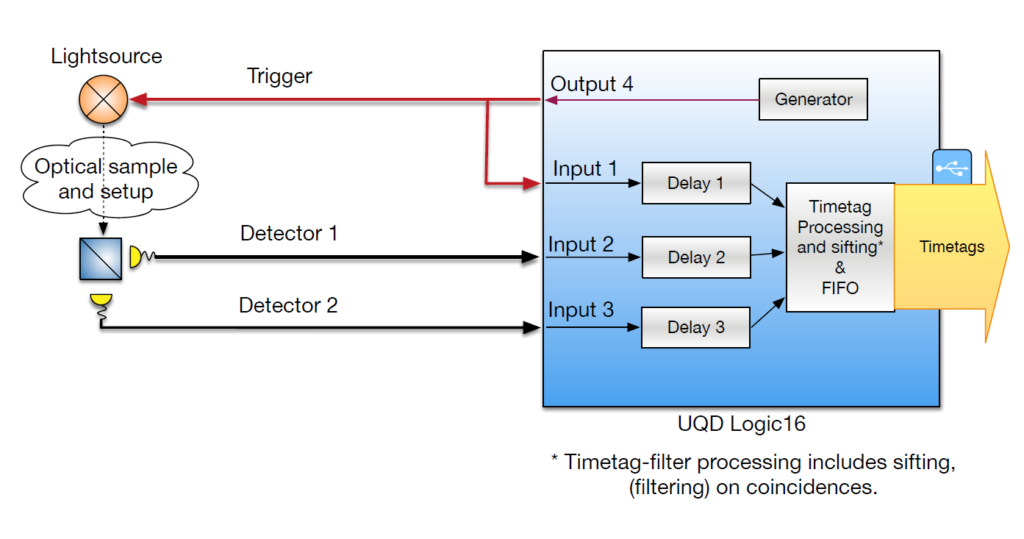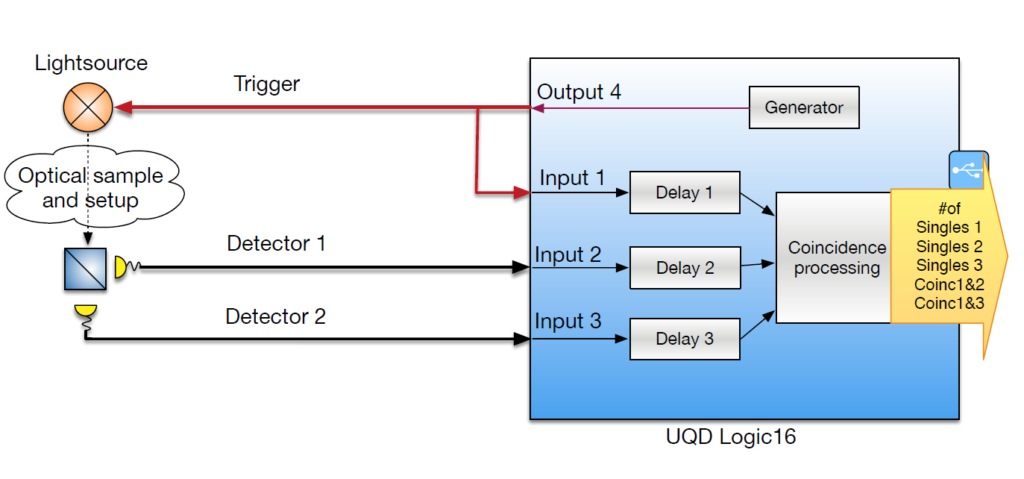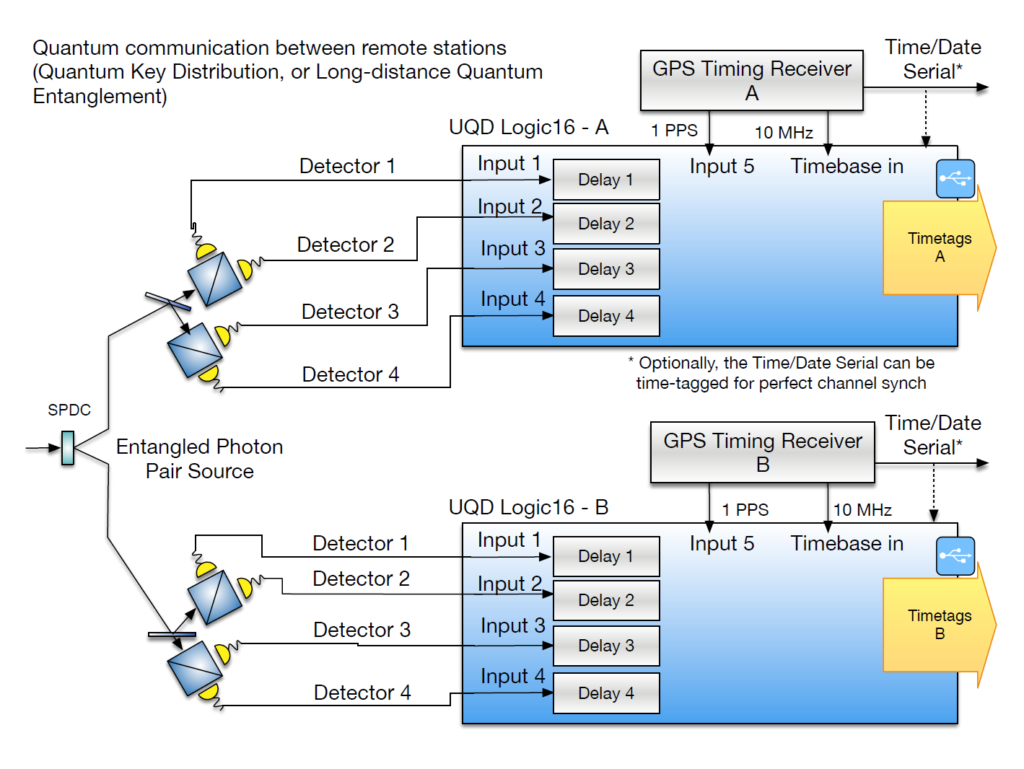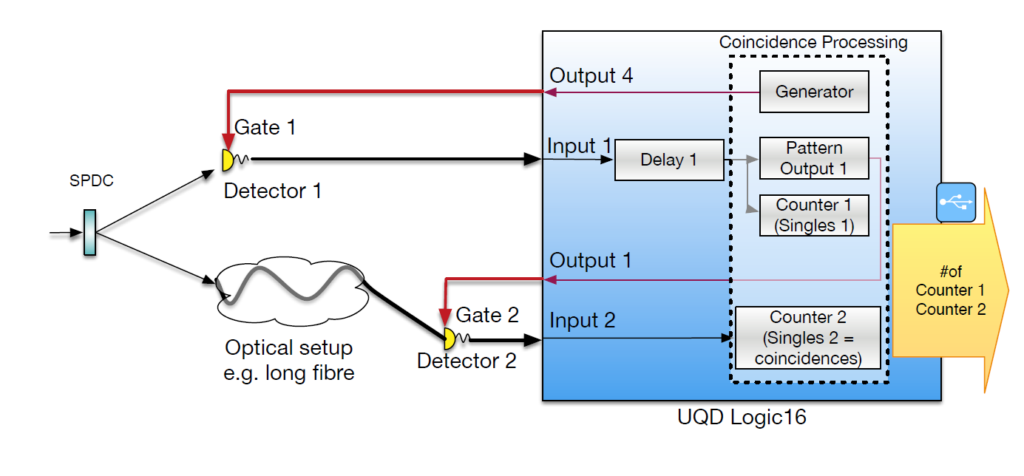Logic16 can be used in a variety of experimental configurations that each use a unique combination of its features. Some suggested use-cases are provided below, with a comparison of features in the following table. More applications can be found here.
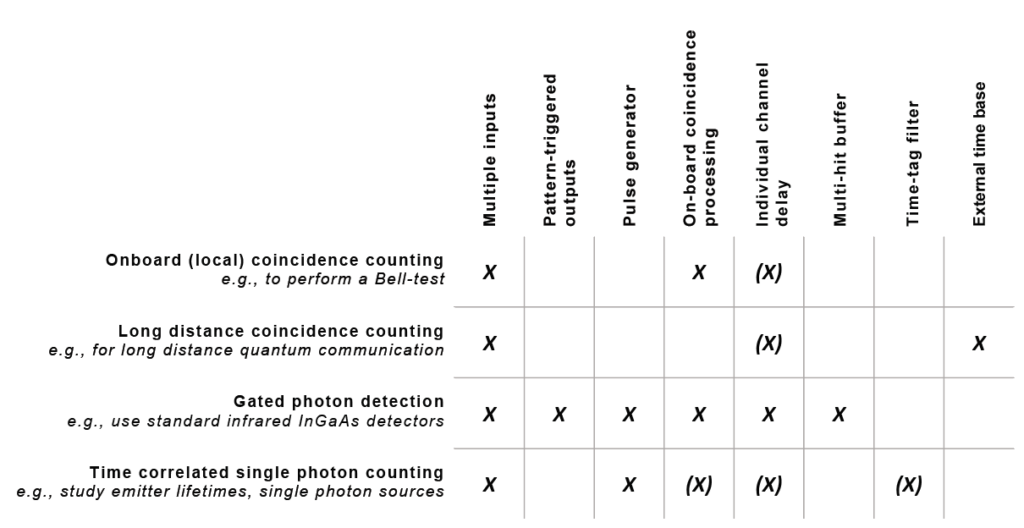
On-board coincidence counting
Application: Bell-inequality test
Pictured below is an example setup for the CHSH Bell-test, for experimental study of two-photon entanglement. Demonstrating violation of the CHSH-inequality requires counting the number of coincidences and anti-coincidences at detectors 1-4. Note that the number of detectors required to perform Bell-tests for n entangled photons may scale as multiples of n.
Obtain counts for all needed coincidence patterns as well as singles (counts at one detector) without post-processing time-tags or over-burdening a host PC with large amounts of data. With Logic16’s proprietary, on-board coincidence counting algorithms it is possible to obtain these coincidence and singles counts using a ‘small, low-power’ computer. Imagine a 10-year-old laptop laying around the lab, that does not have the power to post-process time-tags – Logic16 enables Bell-test measurements using such a computer, by handling intensive processing internally. Up to 4-photon (local) entanglement can be accomplished on one unit (more by synchronizing units) due to the 16 input channels. Users can furthermore compensate for varying path-length differences by individually tunable delays on each channel, with a range up to 40 μs (limited by measurement rate).

Long distance coincidence counting in time-tagging mode
Application: Long distance quantum communication, QKD, quantum entanglement (Bell-test)
The basic setup design below could be adapted for either long distance QKD or Bell-tests. Two Logic16 units at different measurement sites are used. An entangled photon pair is split, with one photon routed to each site. The measurement requires 6+ channels per Logic16 unit.
Long distance quantum protocols can be achieved using the Logic16’s many inputs. Synchronize multiple units with a split reference signal and avoid post-processing by engaging the external timebase. Compensate for photon path-length differences with the individually tunable delays.
Gated Photon Detection
Application: easy use of gated infrared photon detectors (e.g., InGaAs detectors)
To the right is an example implementation of gated photon detection to measure an entangled photon pair. Gated photon detector 1 is triggered by Logic16’s pulse generator. Photons arriving at this detector act as a herald for the second photon, which is sent through an additional length of optical fiber to delay its arrival at detector 2. Detection of the heralding photon, with an added delay, triggers detection by detector 2 by way of a TTL pulse from one of Logic16’s programmable outputs. Coincidences and singles are processed on-board and sent to the host PC.
Time resolved single photon counting
Time-tagging mode
Application: fluorescence lifetime measurements, g(2) measurements for single photon sources
The setup below could be used to perform, e.g., g(2) measurement for various single photon sources (NV centers, quantum dots, etc.).
The light source is triggered with the pulse generator, which is split into input 1 to record the time of trigger. Emission from the single photon source is directed to a beam splitter, with the output port signals detected at input 2 and 3. The time-tag filter can be set to require a minimum detection of at least two events (trigger pulse + 1 photon) to store and send the time-tags to the host PC. This can dramatically decrease the amount of information sent to your host PC. A FIFO approach sorts time tags chronologically for fast processing.
Coincidence counting mode
Application: photon source or detector characterization, TCSPC histogramming
In cases where real-time acquisition of count rates are important, performing measurements in Logic16’s coincidence counting mode keeps data processing fast and simple. On-board processing allows the user to access all coincidence, anti-coincidence and singles counts, even with a small, low-power host PC. It removes the hassle of post-processing.
